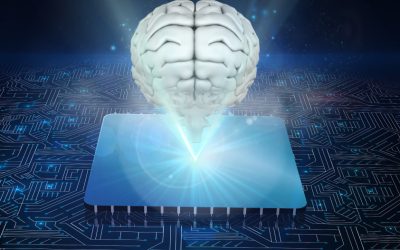
The Power of Cloud Computing & ML to redefine Engineering
Imagine a technology, that helped Airbus shave off 45% (30kg) of the weight of an interior partition in the A320. That weight decrease resulted in a massive reduction of jet fuel consumption and several thousand tons of carbon dioxide emission when applied across its fleet of planes. It equaled taking 96,000 passenger cars off the road for a year. The technology in question is Generative Design.
So, what is Generative Design? Basically, by using artificial intelligence (AI) software and the computing power of the cloud, the generative design enables engineers to create thousands of design options by simply defining their design problem and then inputting basic parameters such as height, load-bearing capacity required strength and material options. It, therefore, replicates the natural world’s evolutionary approach with cloud computing to provide thousands of solutions to one engineering problem.
With generative design, engineers are no longer limited by their own imagination or past experience. Instead, they can collaborate with technology to create smarter, more cost-effective and environment-friendly options.
Since generative design can handle a level of complexity that is impossible for human engineers to conceive of, it can also consolidate parts. Thus, single parts can be created that replace assemblies of 2, 3, 5, 10, 20, or even more separate parts. Consolidating parts simplifies supply chains, maintenance and thereby reduces overall manufacturing costs. With its ability to explore thousands of valid design solutions, built-in simulation, awareness of manufacturability and part consolidation; generative design impacts far more than just design. It impacts the entire manufacturing process. Thus, the generative design delivers a quantum leap in real-world benefits. It can lead to massive reductions in cost, development time, material consumption and product weight.
As AI becomes a part of all work processes, generative design can become the norm for product design. The order of the day will be products that are better suited to consumer needs, and are manufactured in less time; with less material waste, less fuel waste, and less negative impact on our planet.
However, deploying an algorithm-based design will lead to a paradigm shift in engineering because as Franck Mouriaux, a global expert in aerospace engineering, once stated “Engineers were not trained to formulate the problem. They were trained to find solutions.” But it is formulating the problem, which is the key to generating good geometry.
No doubt, engineers can express a design challenge in natural language. For example: If a suspension part of a car, was to be made significantly lighter, will the car still be secure when traveling at a certain speed? However, formulating such a problem in computable terms – regions targeted for material reduction, regions that must remain unchanged for safety and aesthetics, anticipated stress loads on the part while the object is moving, the direction of the loads, the type of vibrations it is likely to endure, and so on – is a still challenging. The skill to express the design problem as a set of parameters can be found in simulation software users. But this requirement can prove a steep learning curve for people trained in CAD.
Generative design inquiries are usually not typical yes/no questions (will it break or will it hold?); they’re formulated as what questions (under these conditions, what are the best suspension design options for a safe and secure car?). As you add additional constraints or parameters (such as acceptable weight range for the part, preferred manufacturing materials and more), the design options change.
Quite often, what is mathematically optimal – geometry with sufficient material reinforcement to counter the anticipated stress in different regions – is impractical to manufacture or produce, either due to cost concerns or the limitations of the production methods available. Additive manufacturing (AM) now gives the option to 3D print certain complex geometric forms that cannot be machined; however, even with AM, certain limitations persist.
The onset of practical artificial intelligence algorithms has enabled the possibility of mainstream generative design tools. That means engineers can create thousands of design options inherent to their digital design and choose which design meets their needs to the fullest. They can then solve manufacturing constraints and ultimately build better products.
Therefore, many companies are embarking on this path, as they have realised that it is a powerful addition to an engineer’s design arsenal. It results in better ideas and products that are lighter and accomplish their directives better. And so, it comes as no surprise that we see applications beyond the aerospace industry, highlighted by the following use cases:
- In the automotive industry, General Motors was one of the first companies to use generative design to reduce the weight of its vehicles. In 2018, the company worked with Autodesk engineers to create 150 new design ideas for a seat bracket and chose a final design that proved 40% lighter and 20% stronger than the original component.
- Under Armour has used generative design algorithms to create a shoe with the ideal mix of flexibility and stability for all types of athletic training. It was inspired by the roots of trees. The algorithm came up with a rather unconventional geometry. The prototypes were then 3D printed into a shoe and could be tested by more than 80 athletes in a fraction of the time than it would have taken in the past.
Simply put, Generative design is a tool that uses machine learning to mimic a design approach similar to nature. It interfaces with engineers by allowing them to input design parameters to problem-solving. Thus, the engineer can decide to maintain certain material thicknesses, despite higher costs, due to the higher load-bearing capacity required. All this can be fed into generative design tools.
The algorithms provide generative designs that meet the input criteria. The role of the engineer is then to pick the most suitable design and modify it. In essence, it leads to a digital shortcut to optimizing the perfect design. Thus, it basically kickstarts the entire design process.
In order to build any item, instead of starting with some sketches, creating various designs, and picking the best one; one can start by feeding some constraints into a computer. For instance, input the ballpark cost, the weight it needs to support, and what material it needs to be made out of. Then the computer can deliver thousands of design options. This is what generative design offers to the modern engineer.
True generative design is software that uses the power of cloud computing and true machine learning to provide sets of solutions to the engineer. This is in stark contrast to previous tools, such as topology optimization, latticing, or other similar CAD tools. All of these previous tools improved existing designs, whereas generative design creates a new design.
Generative design is also different from other existing CAD tools in that it can consider manufacturability. The generative design takes into account simulation throughout the entire design process. On the front end, the manufacturing method is considered, and the software will take care of simulating a given design’s feasibility. Thus, only designs that meet the necessary simulated criteria and are manufacturable are generated.
Generative design works best in conjunction with other technologies – 3D printing for instance. 3D printing makes it possible to quickly prototype and test new designs without committing to a costly and time-consuming custom manufacturing run. Also, there are no geometrical boundaries for a 3D printer. This means it can produce extremely complex structures that traditional methods, such as milling, are unable to manufacture.3D printing also facilitates mass-customization, i.e., it can print products tailored to a single specific need.
In addition to saving time, generative design algorithms can also create new products that were not possible before. For example, researchers are using generative design algorithms to analyse a patient’s bone structure and create customized orthopedic hardware on-the-spot using additive manufacturing processes.
Generative design is a fast-evolving field and new stunning applications are created literally every day. However, implementing generative design is not simple. Introducing generative design to a company or engineering department requires readiness and change among multiple stakeholders. It not only creates new products but completely disrupts traditional structures. It is difficult to master the software and a larger learning curve must be considered – it is definitely not a plug-and-play application.
However generative design is a powerful new way to approach engineering design problems. While AI and ML can’t replace humans, they can automate many of the tedious processes that create bottlenecks, ranging from optimization to aesthetics. Many of these capabilities are already present in modern tooling.
In the near future, items that we use every day, the vehicles we travel in, the layout of our daily work environment and more will be created using generative design. Products may take on novel shapes or be made with unique materials as computers aid engineers in creating previously impossible to conceive solutions.
The generative design takes an approach towards engineering that has never been seen before in the digital realm. It replicates an evolutionary approach to design, considering all of the necessary characteristics. Couple this with high-performance computing and the capabilities of the cloud; and the possibilities are limitless.
Related Posts
AI Toolbox: Creative Content Beyond ChatGPT & BARD
Introduction: In the dynamic landscape of artificial intelligence (AI), ChatGPT and BARD have garnered significant attention for their capabilities in natural language processing and music composition. However, a rich tapestry of AI tools exists...
Ethical Considerations in Generative AI: Ensuring Fair and Responsible Data Analytics
Introduction Generative AI, a transformative subset of artificial intelligence, is revolutionizing data analytics and machine learning. It empowers machines to generate data, images, and text that mimic human creativity. While the potential of...
Building a Better Future with Digital Public Goods
The world is on the cusp of digitization! In this era of digitization, we have transformed the way we communicate, interact, and access information. It has not only changed our personal lives but also has brought an evident transformation in the...
The Role of Artificial Intelligence in Cyber Security
In an era characterised by rapid technological advancements and increasing digitalisation, the field of cyber security faces an escalating and ever-evolving threat landscape. As cyber threats become more sophisticated, organisations must employ...
TinyML: The Future of Edge AI
Artificial intelligence (AI) has been a hot topic in recent years and with good reason. AI has the potential to transform countless industries and improve our lives in numerous ways. However, as powerful as AI can be, it also requires a lot of...
The Evolution of Federated Learning
Uber settled an inquiry into a data breach that exposed the personal data of more than 5,00,000 drivers in 2016 by paying $148 million. A GDPR breach resulted in a $57 million fine for Google in 2020. On-growing data privacy and data breach issues...
Subscribe To Our Newsletter
Lorem ipsum dolor sit amet, consectetuer adipiscing elit. Aenean commodo ligula eget dolor. Aenean massa. Cum sociis natoque penatibus et magnis dis parturient montes, nascetur ridiculus mus

Company
About us
Careers
Contact
Awards
Blog
Offerings
Strategy & Consulting
Managed Services
Solutions
Digital Public Goods
Solutions
Data Solutions
Industry Solutions







